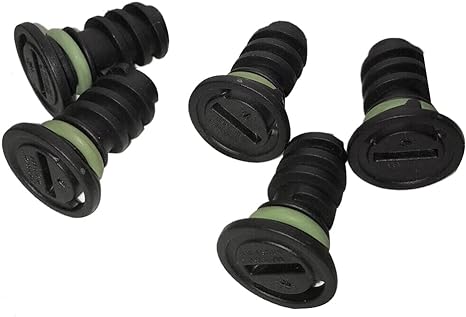oil o ring seals
Understanding Oil O-Ring Seals Essential Components for Fluid Management
Oil O-ring seals are critical components commonly used in various industries, including automotive, aerospace, and manufacturing. Their primary function is to create a reliable seal between two surfaces to prevent the leakage of fluids, particularly oils and other lubricating substances. This article delves into the significance, types, applications, and maintenance of oil O-ring seals.
What are O-Ring Seals?
An O-ring seal is a circular, rubber-like “O” shaped elastomeric ring that enables a tight seal between two mating surfaces. The design allows the O-ring to compress and fill the gap when installed in a groove. This compression creates a barrier that effectively prevents the escape of fluids and contaminants. The simplicity of its design, along with its effectiveness, makes the O-ring one of the most widely used sealing solutions.
Types of O-Ring Materials
The material of the O-ring is paramount, as it determines the seal's performance in various environments. Common materials include
1. Nitrile Rubber (Buna-N) Known for its excellent resistance to petroleum-based oils and fuels, making it a popular choice in automotive applications.
2. Fluoroelastomer (Viton) Offers superior heat and chemical resistance, ideal for high-temperature environments and aggressive chemical exposure.
3. Silicone Provides excellent flexibility and resistance to extreme temperatures, often used in food-grade applications.
oil o ring seals

Choosing the right material is crucial to ensure the longevity and effectiveness of the O-ring seal.
Applications of Oil O-Ring Seals
O-ring seals are versatile and can be found in a myriad of applications. In the automotive sector, they are used in engines, transmissions, and hydraulic systems to prevent oil leakage and maintain pressure. In aerospace, O-rings are essential in fuel systems and hydraulic actuation systems to ensure safety and reliability. Additionally, they are widely used in household appliances, industrial machinery, and even medical devices.
Challenges and Maintenance
Despite their reliability, O-ring seals are not immune to wear and tear. Factors like temperature fluctuations, pressure changes, and the chemical composition of fluids can accelerate degradation. Regular maintenance is crucial to ensure the seals remain functional. Inspecting the O-rings for signs of wear, such as cracks, swelling, or discoloration, is essential. Replacing worn O-rings promptly can prevent costly leaks and potential equipment failures.
Conclusion
Oil O-ring seals are pivotal in maintaining the integrity of fluid systems across various applications. Their simplicity, coupled with a diverse range of materials, makes them indispensable in preventing leaks and ensuring efficient operation. By understanding the different types, applications, and maintenance needs of O-ring seals, industries can enhance their operational reliability and safety. Investing in quality O-rings and committing to regular inspections can yield significant long-term benefits, ensuring systems run smoothly and efficiently.
-
Simplifying Oil Changes: A Comprehensive Guide to Oil Drain Plugs and Their Variants
News Aug.04,2025
-
Mastering Oil Drain Maintenance: Solutions for Stripped, Worn, and Upgraded Oil Plugs
News Aug.04,2025
-
Fixing Oil Pan Plug Issues: Leaks, Stripped Nuts, and the Right Replacement Solutions
News Aug.04,2025
-
Everything You Need to Know About Oil Drain Plugs: Sizes, Fixes, and Upgrades
News Aug.04,2025
-
Choosing the Right Oil Drain Plug: A Guide to Sizes, Materials, and Drain Innovations
News Aug.04,2025
-
A Complete Guide to Automotive Drain Plugs: Types, Problems, and Innovative Solutions
News Aug.04,2025
-
The Ultimate Guide to Car Repair Kits: Tools and Essentials Every Driver Should Own
News Aug.01,2025
Products categories















